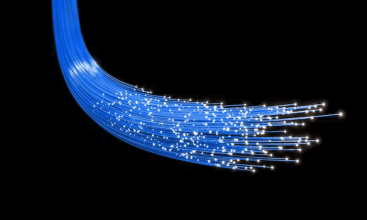Question
a.
Thermal noise
b.
Dark noise
c.
Quantum noise
d.
Gaussian noise
Posted under Optical Communication
Interact with the Community - Share Your Thoughts
Uncertain About the Answer? Seek Clarification Here.
Understand the Explanation? Include it Here.
Q. ______________ is caused due to thermal interaction between the free electrons and the vibrating ions in the conduction medium.
Similar Questions
Explore Relevant Multiple Choice Questions (MCQs)
Q. A small leakage current still flows from the device terminals even if there is no optical power incident on the photo detector.
View solution
Q. ___________ distribution provides the description the random statistics of light emitted in black body radiation.
View solution
Q. The probability of zero pairs being generated when a light pulse is present is given by which of the following equation?
View solution
Q. The minimum pulse energy needed to maintain a given bit-error-rate (BER) which any practical receiver must satisfy is known as ___________
View solution
Q. A digital optical fiber communication system requires a maximum bit-error-rate of 10⁻⁹. Find the average number of photons detected in a time period for a given BER.
View solution
Q. For a given optical fiber communication system, P(e) = 10⁻⁹, Zₘ = 20.7, f = 2.9×10¹⁴, η = 1. Find the minimum pulse energy or quantum limit.
View solution
Q. An analog optical fiber system operating at wavelength 1 μm has a post-detection bandwidth of 5MHz. Assuming an ideal detector and incident power of 198 nW, calculate the SNR (f = 2.99×101¹⁴ Hz).
View solution
Q. The incident optical power required to achieve a desirable SNR is 168.2 nW. What is the value of incident power in dBm?
View solution
Q. In the equation given below, what does τ stands for?
Zₘ = ηP₀τ/hf
View solution
Q. Which are the two main sources of noise in photodiodes without internal gain?
View solution
Q. The dominating effect of thermal noise over the shot noise in photodiodes without internal gain can be observed in wideband systems operating in the range of ________
View solution
Q. A silicon p-i-n photodiode incorporated in an optical receiver has following parameters:
Quantum efficiency = 70%
Wavelength = 0.8 μm
Dark current = 3 nA
Load resistance = 4 kΩ
Incident optical power = 150 nW.
Bandwidth = 5 MHz
Compute the photocurrent in the device.
View solution
Q. In a silicon p-i-n photodiode, if load resistance is 4 kΩ, temperature is 293 K, bandwidth is 4 MHz, find the thermal noise in the load resistor.
View solution
Q. ________________ is a combination of shunt capacitances and resistances.
View solution
Q. ______________ is used in the specification of optical detectors.
View solution
Q. A photodiode has a capacitance of 6 pF. Calculate the maximum load resistance which allows an 8MHz post detection bandwidth.
View solution
Q. The internal gain mechanism in an APD is directly related to SNR. State whether the given statement is true or false.
View solution
Q. ____________ is dependent upon the detector material, the shape of the electric field profile within the device.
View solution
Q. For silicon APDs, the value of excess noise factor is between _________
View solution
Q. __________ determines a higher transmission rate related to the gain of the APD device.
View solution
Recommended Subjects
Are you eager to expand your knowledge beyond Optical Communication? We've handpicked a range of related categories that you might find intriguing.
Click on the categories below to discover a wealth of MCQs and enrich your understanding of various subjects. Happy exploring!








